Part 2: Trust Your Body’s Intelligence
But do you actually do it?
Do you know HOW to truly LISTEN to your body and TRUST that it knows stuff?
Perhaps you feel like you do this. You’ve been trying your best and perhaps taking modifications that you have learned from teachers and that feel right to you, and that’s great.
Our yoga culture is very set up to encourage a march down a path toward a “full expression” of all of the yoga postures. “Modifications” are often thought of something we do as an alternative, hoping that with enough practice, patience, letting go, and strength building, we’ll finally arrive at our destination.
All of the tips and tricks aren’t bad, and I’m very grateful for my thorough training and the years I spent learning “good alignment,” how to stack bones, and traditional yoga postures, as it gave me a framework to jump off from.
But now, it’s all changing, and it’s really exciting. My own practice has shifted into a whole new approach that feels so awesome, productive, and nurturing to me.
It’s an evolution of my alignment-based practice, not a throw away. It’s a building on top of, not a thorough destruction. And I hope that some of the things I’ve learned in the past year will benefit your practice as well.
Starting to incorporate TRUE LISTENING into our practice and into our teaching can have far-reaching impacts for our students and for ourselves. And it starts with learning to trust your body’s intelligence.
My evolution toward REALLY discovering the intelligence of the body started in the Summer of 2017, when I had the pleasure of assisting Valerie Moselle in the 200-hour Yoga Teacher Training with Luma Yoga.
This training blew my practice OUT OF THE WATER.
There was a new layer on top of Val’s teaching, and that layer was the science of biomechanics, load, and skeletal variation.
Sure, I had done anatomy trainings in the past as part of other courses, and I also completed a fantastic online anatomy course with Leslie Kaminoff, the author of Yoga Anatomy, several years before. But surprisingly, most of the training I’d received had never fully introduced me to HOW the body actually gets stronger, more mobile, responds to loads, adapts over time, etc. This information is slowly coming into more and more yoga trainings these days, but the process is slow. Watch out for it, because it’s amazing stuff and it’s important.
Because while the “goal” of yoga (for some) is to come into closer union with the universal spirit, however you define that, it’s important to acknowledge that we are working with BODIES in the modern postural yoga class,
It’s important to not ignore that we want our bodies to work for us functionally in our lives — to be strong and resilient, not just flexible and bendy on a yoga mat for the sake of a pose or a feeling in class.
Since Val’s training, I have done a lot of learning on how exercise science and evidence-based approaches to yoga can assist in this process, and how we can learn to TRUST our bodies.
There is a TON of information to unpack here. To keep it simple, here are the basic ideas I’ve been working with in my own practice:
- Our bodies are all different
- Our bodies are self-organizing
- The tissues of our bodies need load in order to get stronger
We’ll look at these one at a time.
1. Our bodies are all different
I mean, obviously.
Each person’s body has features that are put together differently, just as each person’s facial structure is different. We all share a similar framework, but of course, there are vast differences. Not just in range of motion or bony restrictions (where a bone just literally runs into another bone in a joint position and there’s nowhere else to go). But also in arm lengths, leg lengths, torso lengths, the way each person’s shoulder girdle and pelvic girdle are put together and more.
EVERYTHING is varied. This is skeletal variation.
So the yoga practice really has to take this into account.
For example, when one person comes into Warrior 1, a common instruction is to roll the back heel down and turn the foot in about 45 degrees. Classically, we might even insist that the student line up the arch of the back foot with their front heel, though most often these days many teachers (including me) do not teaching this “tightrope” version of the pose but instead encourage a wider stance so that the hips can turn more toward the front of the mat.
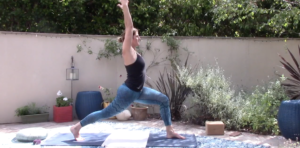
But even with a wide stance, it may not actually be possible for some students to EVER to put their back heel down on the floor, at a 45 degree angle, just because of the way their ankle bones, shin bones, and hips are put together. If that person were to FORCE this foot position thinking this is a crucial part of the pose, they may pay for it in their ankle, knee, and hip joints. This may happen either immediately or over time, just because of the way their hips, knees, shinbones, ankles, and feet are put together.
If you were to put two students side by side and look at the angles of their feet, shins, and knees, even in a simple standing position, we would notice big changes between each person. If bones are shaped and positioned a certain way and are of a certain length, those attributes will NEVER change, no matter how hard they work to “align” or how much they “stretch.”
And does it even matter? If the back heel is lifted and the feet are wider and turned in or out or whatever, is it still Warrior 1? Can we still capture the mood, power, strength, energy, and awareness of this pose and call it yoga?
Sure we can.
Because what is asana anyway?
There is huge freedom in letting some of these strict “rules” that we picked up along the way go. Without strict guidance on HOW to place feet, arms, shoulders, wrists, etc, we are granted with PERMISSION to lean into the intelligence of our own body and to let our body organize itself for each task.
Which brings us to…
2. Our bodies are self-organizing.
Our brains are amazing at accomplishing tasks by moving muscles, joints, and bones, but our brains don’t think about it this way.
When we want to take a drink of water from a glass, our brain sends a message to lift the glass of water so we can take a sip, and we figure out, somehow, how to do that, without having to think about the muscles involved, whether we line up our wrist with our chin, etc. We just do it. Our brains and our bodies organize things for us all the time.
During the week with Val, this was a clear message of the practices we did together. I was granted permission to truly heed what my body was telling me it needed. Permission to not be held to this idea of what the pose was “supposed to look like.” Permission to let my body support me.
Val taught many poses with a tenet of TRUST, PERMISSION, and FUNCTION. For example, when Val asked us to come into a lunge and to imagine that an 8-year-old child was going to climb up on our shoulders and we had to support them, guess what? My body made the necessary shifts to become more supportive.
This is what it means to trust your body’s intelligence.
Our bodies were MEANT for movement. They WANT to be strong. And they actually know how to, all on their own.
Incidentally, that week I also had a shoulder injury. Nothing major, just a tweak that had happened before while gardening, but it was super hard to lift my right arm up over my head. So I just didn’t. I found a wildly creative side to my practice when I was forced to work around the idea that I had in my mind of what each pose was supposed to be. And instead of just skipping the pose, I explored. I rolled around. I supported my arm when I needed to. I shifted from what was being taught into the closest thing I could find that work.
And guess what? My body KNEW how to do this, when I got out of the way with my mind.
I figured it out with my shoulder. Also, my hip stopped clicking so much. When I started to let go of these strict shapes I’d been forcing myself into for several years and exploring, trying to find way to move differently, my body started to shift. And it’s not that those shapes were “bad,” it’s just that moving ONLY into those shapes was then creating repetitive motion patterns. So I’ve now become interested in trusting my body to find new ways to move.
Does this mean that all of the work of Anusara Yoga and other alignment systems are no good and should be thrown out? Absolutely not. It’s just an expansion and an evolution beyond.
Earlier this week in a private lesson, I asked my student to come into a version of Bridge Pose on a Coregeous Ball and to find balance. It’s actually pretty fun to try this, and there is a rocking quality as the hips dance a little bit with the motion of the ball. Then we made it a bit more challenging, when I asked her to bring one knee into the chest and hold onto the shin with her hands, and to extend the bottom leg straight. Harder! And then I asked her to lift the straight leg off the floor. Really hard!
But you know what? As soon as I asked her to trust her body to find a way to balance in this weird position, she figured it out! That’s the magic of trusting the body’s intelligence. And she got a little core work in and strengthened her hip flexors at the same time. Here’s a little video of how to try this one (click the image to play):
The yoga postures provide a scaffolding for the exploration of your body.
But does it matter if your hands are on your hips in Warrior 2 instead of out wide? No.
So what about alignment? What about cueing? Do we need them? I think so, but now I think about them in a different way. The detailed cues are helpful in that they give us a way to work with ENERGY to get stronger, to expand, and to feel more fully. This is what we’re after.
The skillful actions from Anusara Yoga still have a place, and Val teaches a similar list of universally applicable cues that tend to be helpful for most everyone. These are things like “reaching up through all sides of the torso” in a standing position to lengthen the spine or to “reach from the sitting bones down to the heels” in Downdog to bring more engagement to the backs of the legs. The really validating thing for me was to realize that virtually all of these universal cues map quite well to the Anusara alignment principles that I still largely teach. But they are ACTIONS, not strict alignment guidelines.
And though the actions are good gateways in, the BIG shift was the idea that my body actually already KNOWS most of this stuff, when we can get out of the way.
Also, as I learned from Jenni Rawlings in her FABULOUS course, “Keeping Your Yoga Teaching Current” (discount code at the end…keep reading for it!), it’s not that the strict alignment stuff is always BAD. It’s just one way to work. It’s can be a great way to learn to stack bones on top of bones, which can be very stable (for instance, stacking the shoulders over the wrists in Plank). Working this way is wonderful for beginners to build strength and find the foundation of their practice. But once we have an established yoga practice, continuing to stack bones with “proper alignment” and to move within a very strict and non-varied version of the poses we know and love actually CHEAT our body.
To get stronger and support our bodies in functional movement, we have to move in varied ways.
Once fascinating way to work on this that I do with my students quite often is to ask them to lay down from a standing position without using their hands. And then stand back up without using hands. And then lay down using a DIFFERENT way from standing, and then to stand up using a DIFFERENT way. It’s so fascinating to see what people come up with. Our bodies CAN be trusted to figure out how to move! We just have to play with mixing it up.
Here’s a super fun video from part of a challenge I took part in (until I sprained my ankle – unrelated to yoga, just rolled off a stair – and had to take a break) called #GetUpGetDown. This work is challenging and fun and mind bending, but it’s GOOD STUFF that is easily incorporated into yoga and movement practices so we feed our body in a new way (click the image to play):
This type of work moves the body in new ways, and does all kinds of magical things for our brains and everything else. It puts new loads on our tissues, and to regenerate, tissues NEED to be loaded. Yep, with weight.
And that brings us to…
3. The tissues of the body need LOAD to get stronger.
We get injured NOT when we’re not in “perfect alignment.” Rather, we get injured when the tissues of the body are unprepared for the load or force that is placed on them. So if we want to prevent injury, the best strategy is to get STRONG.
When we fall, we don’t fall into perfect yoga pose alignment. In fact, two weeks ago, when I rolled off the stair and sprained my ankle, perhaps my injury would not have been so bad if I had been training my ankle to sickle (the horrors!!) in my yoga practice rather than trying to protect my body.
If we want to get STRONG in all the different ways our bodies can move, we have to actually put ourselves there intentionally, and build strength. Not avoid those positions because it’s “bad alignment.”
Bone-stacking alignment IS important if we are just beginning to build strength in a certain position. For example, I know I have a tendency for my right knee to pitch inward on lunges, so if I’m holding 15 lb. weights while doing Reverse Lunges, I really have to concentrate on my alignment. Otherwise, my knee can get easily tweaked if the load it too high. But once I get stronger in that position, I can actually start playing with un-perfect alignment.
And in yoga poses, the load is typically just so low that we aren’t really in danger if we were to let the knee pitch in. In fact, it might be a good thing to try in on purpose, to LET the knee lean in, so that we can build strength in that position. (Note: Credit goes to Jenni Rawlings for this info. Her fabulous course, “Keeping Your Yoga Teaching Current” is something I HIGHLY recommend for yoga teachers – discount code is below!).
But those just starting to practice yoga could benefit from practicing bone-stacking alignment in poses like Plank Pose to build strength, before they start trying to mix it up in more varied movement.
In my next blog post, I’ll talk more about some specific strength building I’m adding into my practice to address hips, pelvis, and now ankles. I want to ensure I can trust my body’s intelligence for decades to come.
What do you think?
In the meantime, I suggest your follow these powerhouse teachers for great content and tips for your own evolution:
- Jenni Rawlings – my favorite evidence-based yoga teacher out there right now. Her course “Keeping Your Yoga Teaching Current” and also her new course, “How to See & Teach Movement for Yoga Teachers” are both highly recommended! Get 10% off with this code: ROBINPENNEY
- Jules Mitchell – a mentor of both Jenni Rawlings and of Valerie Moselle. Jules is a pioneer in bringing biomechanics to the world of yoga. She’s got a new book coming out soon called “The Science of Stretching.” Watch for it!
- Yoga Detour – I adore this Instagram account with all kinds of mobility drills, strength builders, and more that can inspire and supplement your yoga practice. Gems!
- Kathryn Bruni Young – This Canadian teacher is a yogi + weight trainer who inspires all kinds of creativity that is great for the body and mind. She’s got a wonderful free series on basic mobility that she shared over the 2017 holidays that you can enjoy. She also has a pretty amazing podcast called “Mindful Strength” that is very inspiring.
There are many more teachers bringing these new ideas of movement into our yoga classes, and I’m learning about new ones everyday.
Here’s to the continued evolution of our practice, and to the continuing health and intelligence of our bodies!

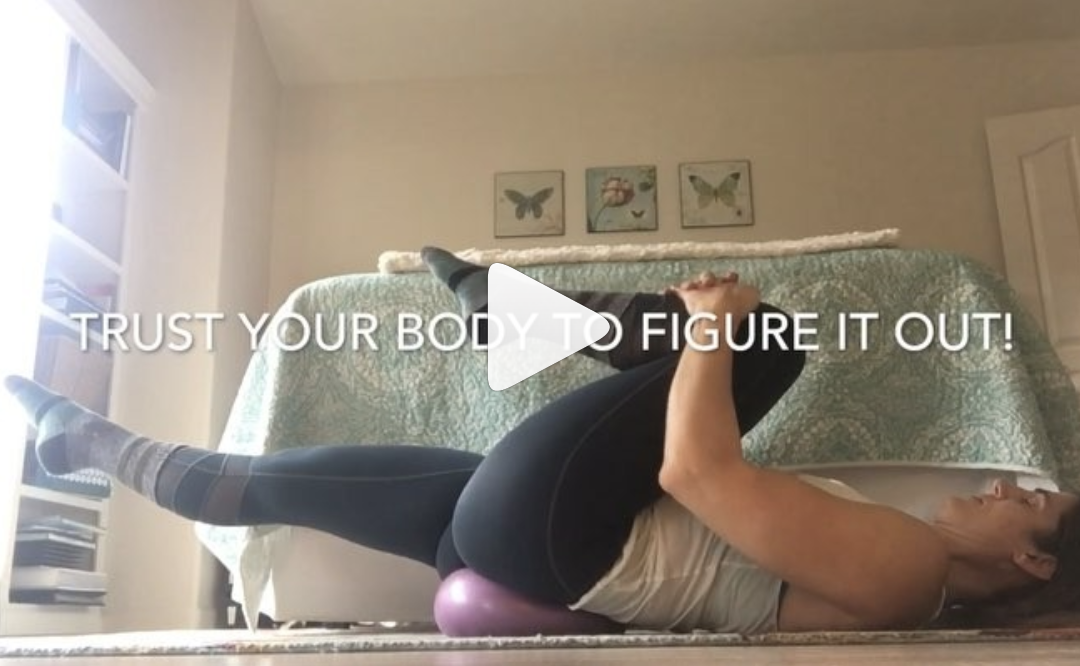
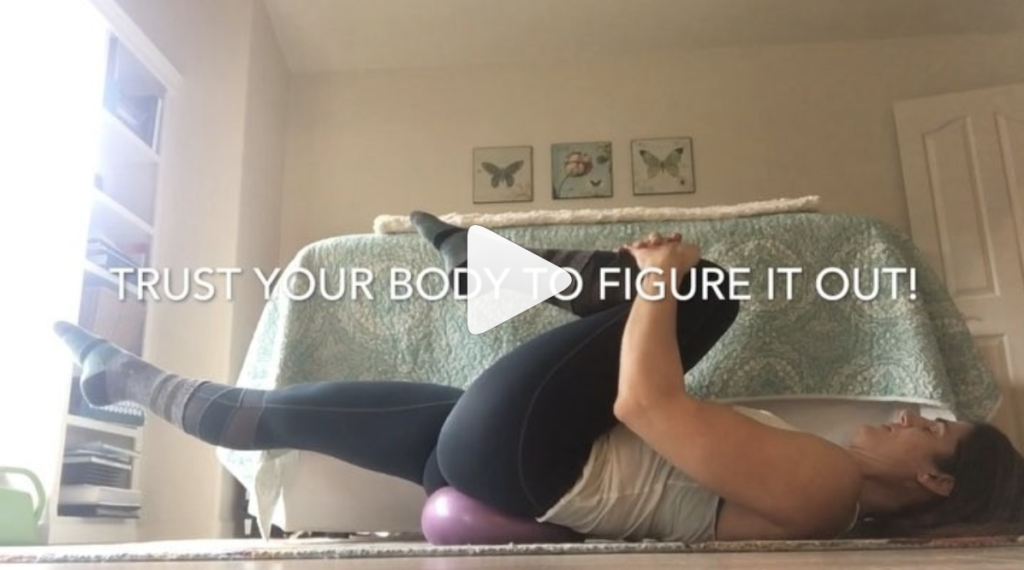
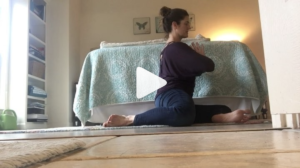
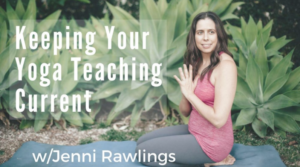
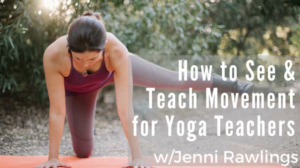
 Empowering women who are 40+ to install movement habits that are nourishing, strengthening, and approachable for a truly calm and connected life.
Empowering women who are 40+ to install movement habits that are nourishing, strengthening, and approachable for a truly calm and connected life.